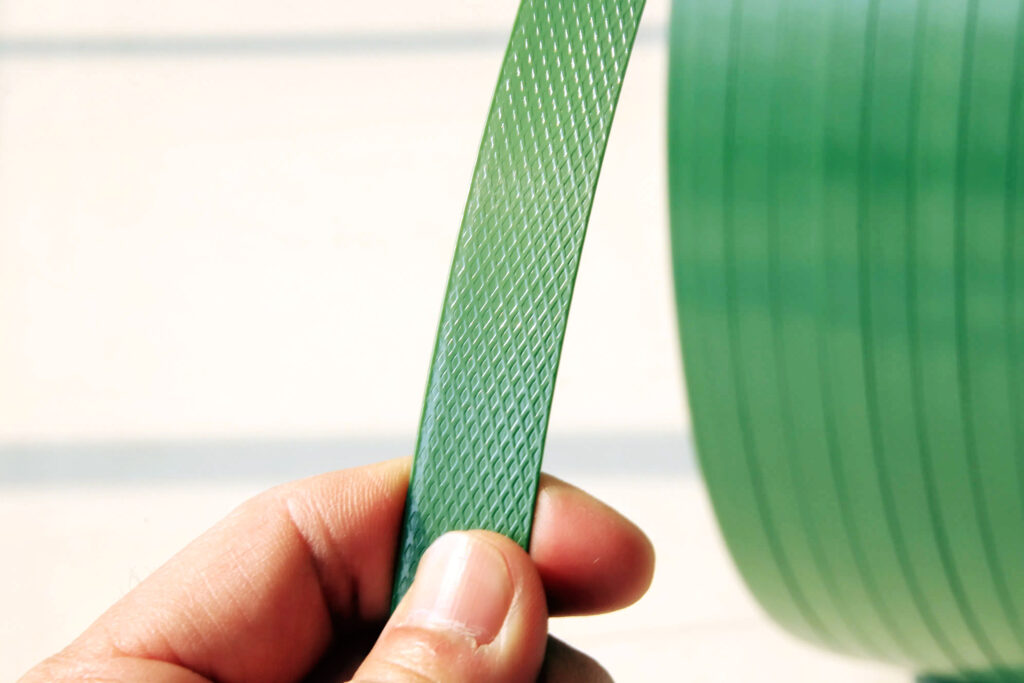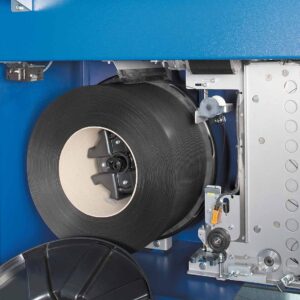As businesses aim to reduce plastic waste, recyclable materials like PET strapping are gaining global attention. These materials combine strength and durability with environmental responsibility. For example, PET strapping’s recyclable properties make it an essential choice for eco-friendly packaging.
One question many companies ask is:
👉 Is PET strapping recyclable?
Yes — and understanding how it works can help your business make smarter, greener packaging decisions.

What Is PET Strapping Band?
PET strapping band is a strong, flexible plastic band made from Polyethylene Terephthalate (PET) — the same material used in beverage bottles. It’s widely used for palletizing and bundling heavy goods, often replacing steel in industrial packaging.
Additionally, it secures products such as bricks, timber, and paper rolls. PET strapping provides excellent tensile strength, elasticity, and weather resistance, making it ideal for both manual and automatic strapping machines.
(Learn more about PET standards on ISO.org)
Is PET Strapping Recyclable?
Yes, PET strapping is fully recyclable. It belongs to the #1 plastic category (PET or PETE), meaning it can be collected, processed, and remanufactured repeatedly. As a result, PET strap’s recyclable nature supports a closed-loop recycling system that reduces waste and carbon emissions.
♻️ The PET Recycling Process
The recycling process is straightforward:
- Collect used PET strapping from warehouses and factories.
- Sort and clean it, removing contaminants such as metal clips.
- Shred the material into small flakes.
- Wash to remove residues and oils.
- Melt and re-form flakes into pellets.
- Remanufacture pellets into new PET straps, bottles, or textiles.
This system helps conserve resources and minimize environmental impact.
(See Reuters: Recycling Plastic Cuts Emissions by 60%)
Why Choose PET Strapping Over PP or Steel?
PET strapping offers the best balance between performance and sustainability. It’s lightweight, rust-free, and 100% recyclable.
By contrast, PP strapping is cheaper but less durable, and steel strapping is strong yet heavy and energy-intensive to recycle. Therefore, PET strapping is the ideal long-term solution for companies seeking strength and sustainability.
(Explore our PET Strapping Products →)
Conclusion: A Smarter, Recyclable Choice
So, is PET strapping recyclable?
✅ Absolutely. It provides superior strength and helps build a sustainable, circular packaging system.
By choosing recycled PET (rPET) and responsible recycling practices, your business can:
- Lower packaging and disposal costs
- Reduce its carbon footprint
- Strengthen its eco-friendly brand image
PET strapping is more than just packaging — it’s a commitment to sustainability and efficiency.
♻️ Start your transition today. Request a free PET strapping consultation →
Frequently Asked Questions (FAQ)
1. Is PET strapping 100% recyclable?
Yes. PET (Polyethylene Terephthalate) strapping is made from the same material as beverage bottles and can be fully recycled through standard PET recycling systems.2. How should PET strapping be disposed of after use?
Collect used straps separately from other waste, remove any metal buckles, and send them to a PET recycling facility or a certified recycler that accepts industrial plastics.3. What’s the difference between PET and rPET strapping?
rPET (recycled PET) strapping is made from recycled PET materials, such as used bottles. It offers the same strength and durability while reducing environmental impact and raw material costs.4. Is PET strapping better than PP for recycling?
Yes. PET is more easily recycled and retains its quality through multiple recycling cycles, while PP strapping tends to degrade faster after each reuse.5. Where can I buy recyclable PET strapping?
You can explore our full range of recyclable and rPET strapping options here →.Still have questions? Contact our sustainability experts →

